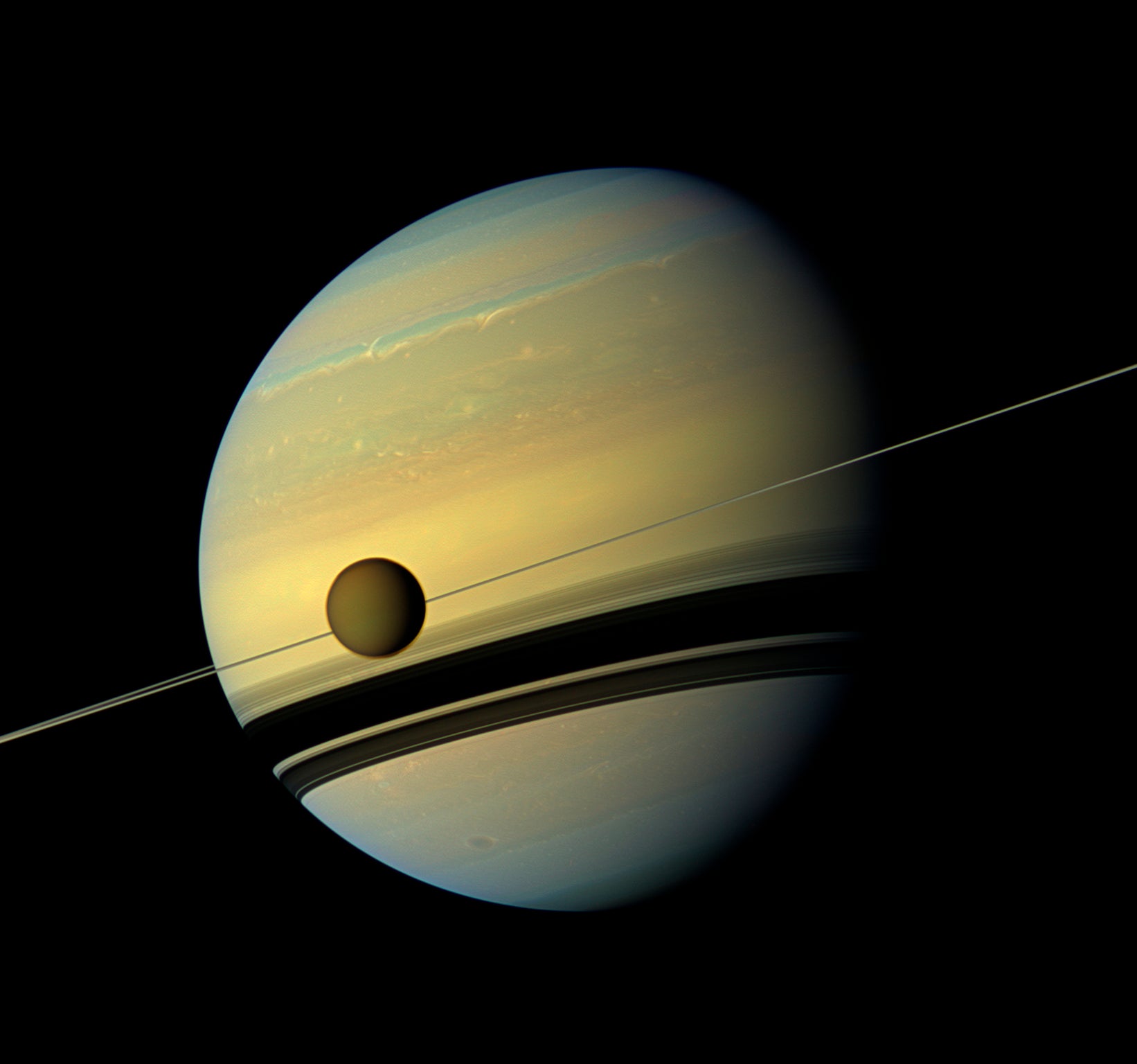Saturn's expecting: New images suggest that the planet is about to 'give birth' to a new moon
Saturn already has 62 moons (including the gigantic Titan, seen transiting in front of the planet above) but this new addition could be its last

New images from Nasa’s Cassini-Huygens space probe suggest that Saturn may be in the process of forming a new moon, which has already been affectionately named by scientists as ‘Peggy’.
The tiny, icy satellite has not been spotted directly, but a bulge in Saturn’s A Ring – the brightest and outermost ring – suggests that the new arrival could soon join Saturn’s already impressive family of 62 moons.
“We have not seen anything like this before,” said astronomer Carl Murray, lead author of a study in Icarus which outlined the findings and the discoverer of the moon. “We may be looking at the act of birth, where this object is leaving the rings and heading off to be a moon in its own right.”
Saturn’s rings are comprised almost entirely of ice with a trace amount of rocky material and stretch from 7,000km to 80,000km above the surface of Saturn’s equator with a thickness varying from 10 metres to 1 kilometre.
The rings are not solid but are made up of countless individual fragments ranging in size from particles as small as a grain of sand to boulder-like lumps metres across. It’s thought that the rings act as a galactic nursery for the planet’s many moons, with material gradually clumping together in orbit until it gathers enough momentum to separate.
“The theory holds that Saturn long ago had a much more massive ring system capable of giving birth to larger moons,” Murray said. “As the moons formed near the edge, they depleted the rings and evolved, so the ones that formed earliest are the largest and the farthest out.”
The largest of Saturn’s moons is Titan with a diameter of more than 5,000km and a mass nearly double that of our Moon. If Peggy does eventually grow up enough to leave home it would be tiny in comparison, perhaps only 0.5 miles in diameter.
Although many of Saturn’s satellites eventually take on orbits many thousands of miles away from the planet, others stay closer to home, sculpting the rings by either collecting stray matter to sharpen their edges or carving out thin gaps like someone a giant snowball rolled through a snowy field.
However, Peggy’s diminutive size suggests that Saturn’s satellite-bearing days may soon be over, with each successive moon appearing smaller than the last as the supply of potentially moon-forming material is depleted.
"The object is not expected to grow any larger, and may even be falling apart," said Nasa's Jet Propulsion Laboratory.
"But the process of its formation and outward movement aids in our understanding of how Saturn's icy moons, including the cloud-wrapped Titan and ocean-holding Enceladus, may have formed in more massive rings long ago."
Subscribe to Independent Premium to bookmark this article
Want to bookmark your favourite articles and stories to read or reference later? Start your Independent Premium subscription today.

Join our commenting forum
Join thought-provoking conversations, follow other Independent readers and see their replies